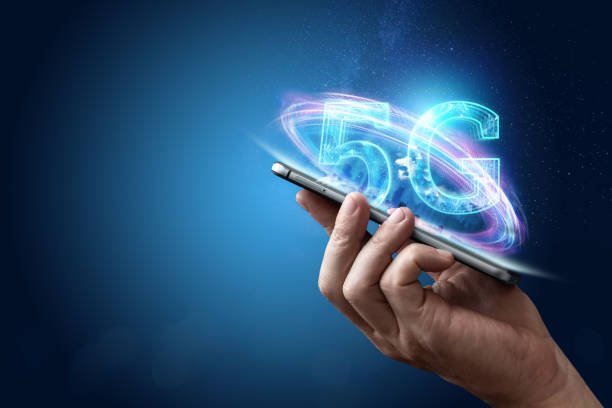What is 5G or fifth generation wireless technology
Speed 5G promises significantly faster data speeds than its predecessors. While 4G LTE can deliver speeds of up to several hundred megabits per second (Mbps) 5G can potentially reach several gigabits per second (Gbps). This means faster downloads, easier streaming and faster response times.
what is 5G or fifth generation wireless technology
5G technology
1. promises significantly faster data speeds than its predecessors. While 4G LTE can deliver speeds of up to several hundred megabits per second (Mbps) 5G can potentially reach several giabits per second (Gbps). This means faster downloads, easier streaming and faster response times.
2. Low Latency Latency refers to the time it takes for data to travel between its source and destination. The goal of 5G is to reduce latency to one millisecond (ms) or even less. This ultra-low latency is important for applications that require real-time response such as remote surgery, autonomous vehicles and augmented reality.
3. Higher more efficient use of radio spectrum and advanced antenna technologies such as Massive MIMO (Multiple Input Multiple Output) 5G networks can support a much larger number of connected devices in the same area than 4G. This high capacity is necessary for the increasing number of Internet of Things (IoT) devices and increasing demand for data.
4. Network slicing Each slice can be tailored to specific applications or user groups for different use cases such as advanced mobile broadband ultra-reliable low-latency communications (URLLC) and large-scale machine-type communications. Ensures optimized performance and service quality. (MMTC).
5. Enabling Technologies 5G relies on several enabling technologies to achieve its goals. These include millimetre-wave (mmWave) frequencies which provide large amounts of bandwidth but have short ranges and can be easily blocked by obstacles; small cells which are low-power base stations deployed in dense urban areas to improve coverage and capacity and advanced network architectures such as software-defined networking (SDN) and network function virtualization (NFV) which make networks more flexible Scalable and make. easy to manage
5G technology promises to revolutionise communications and enable a wide range of innovative applications across industries ranging from health care and transportation to entertainment and manufacturing.
Functions of 5G technology
1. 5G technology serves many functions enhancing and expanding the capabilities of previous generations of wireless technology such as 4G LTE.
2. Increased data speeds 5G delivers significantly faster data speeds than its predecessors allowing faster downloads and uploads of large files, easier streaming of high-definition video content and lower latency for real-time applications. Is available.
3. Low Latency 5G aims to significantly reduce latency the time it takes for data to travel between devices. This low latency is important for applications such as online gaming virtual reality augmented reality and autonomous vehicles where even small delays can be disruptive or dangerous.
4. Increased Capacity With 5G networks can support a much larger number of simultaneously connected devices. This capability is critical for the growing number of Internet of Things (IoT) devices, smart city infrastructures and other applications that require connectivity for multiple devices.
5. Improved Reliability 5G networks are designed to be more reliable than previous generations with features such as network slicing which allows the creation of virtualized network segments tailored to specific applications or users ensuring better service quality and reliability. Allows.
6. Support for Massive Machine Type Communications (MMTC) 5G is designed to support a large number of low-power low-data-rate devices providing efficient communication with low-cost devices, sensors and other connected devices. Enables communications that require minimal bandwidth.
7. enablers for emerging technologies 5G is expected to be a major enabler for emerging technologies such as augmented reality (AR) virtual reality (VR) artificial intelligence (AI) and the Internet of Things (IoT) given their widespread Will facilitate adoption from And innovation.
Overall 5G technology aims to provide faster, more reliable and more efficient wireless connectivity enabling a wide range of applications and services across different industries and sectors.
What's Your Reaction?




















